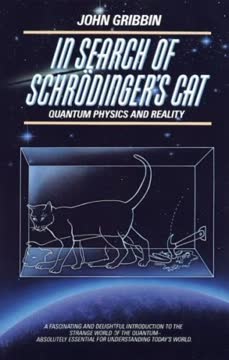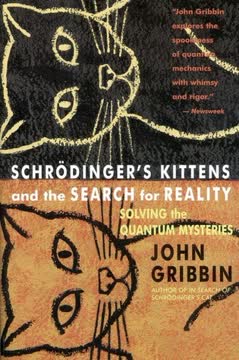Key Takeaways
1. The Multiverse: A Vast Landscape of Possibilities
"There is room in the landscape, for example, for a universe where the laws are exactly the same as in our Universe, but the electron has a tiny bit more (or a tiny bit less) mass."
The Multiverse concept proposes an infinite array of universes, each with potentially different physical laws and constants. This idea emerged from various scientific theories, including quantum mechanics, string theory, and inflationary cosmology. The Multiverse offers an explanation for the apparent fine-tuning of our Universe, suggesting that we exist in one of many possible universes where conditions are suitable for life.
Key aspects of the Multiverse include:
- Infinite variations of physical laws and constants
- Parallel universes with different histories
- Possible explanations for cosmic coincidences
- Challenges to our understanding of reality and existence
The Multiverse theory has profound implications for our understanding of reality, challenging the notion of a unique universe and offering new perspectives on the nature of existence and possibility.
2. Quantum Physics and the Many Worlds Interpretation
"Every subatomic particle has counterparts in other universes, and is interfered with only by those counterparts."
The Many Worlds Interpretation (MWI) of quantum mechanics, proposed by Hugh Everett, suggests that every quantum event creates multiple branches of reality. This interpretation offers a solution to the measurement problem in quantum physics by proposing that all possible outcomes of a quantum measurement occur, but in different branches of the universe.
Key features of the Many Worlds Interpretation:
- Every quantum possibility is realized in some universe
- No collapse of the wave function
- Explains quantum phenomena without additional postulates
- Challenges our intuitive understanding of reality
The MWI has gained traction among physicists and philosophers, offering a coherent explanation for quantum phenomena without the need for a mysterious collapse of the wave function. It also aligns well with other Multiverse theories, suggesting a vast landscape of possibilities realized across different branches of reality.
3. Cosmic Coincidences and Anthropic Reasoning
"For many years,' he wrote: 'I had paid special attention to the problem of the measurement of geological time, and also that of the mild climates and generally uniform conditions that had prevailed throughout all geological epochs, and on considering the number of concurrent causes and the delicate balance of conditions required to maintain such uniformity, I became still more convinced that the evidence was exceedingly strong against the probability or possibility of any other planet being inhabited."
Anthropic reasoning addresses the apparent fine-tuning of our Universe for life. The cosmic coincidences, such as the strength of fundamental forces and the properties of carbon, seem incredibly unlikely to have occurred by chance. This observation led to the development of the anthropic principle, which suggests that we observe a universe compatible with our existence because we could not exist to observe it otherwise.
Key aspects of cosmic coincidences and anthropic reasoning:
- Apparent fine-tuning of physical constants for life
- The carbon and oxygen resonances discovered by Fred Hoyle
- The cosmological constant problem
- Weak and strong versions of the anthropic principle
The anthropic principle has been both praised and criticized, with some seeing it as a powerful explanatory tool and others as a tautology. However, in the context of the Multiverse, it gains new significance, suggesting that our Universe is one of many where conditions happen to be right for life.
4. Inflation: The Universe's Rapid Expansion
"Guth saw that the presence of a scalar field in the very early Universe would make the size of any part of the Universe - any chosen volume of space - double repeatedly, with a characteristic doubling time."
The theory of cosmic inflation, proposed by Alan Guth, addresses several problems in cosmology by suggesting that the early Universe underwent a brief period of exponential expansion. This rapid expansion explains the observed uniformity of the cosmic microwave background radiation and the flatness of space.
Key features of inflation theory:
- Solves the horizon and flatness problems in cosmology
- Explains the origin of cosmic structure
- Predicts a nearly scale-invariant spectrum of primordial fluctuations
- Suggests the possibility of eternal inflation and multiple universes
Inflation provides a compelling explanation for many observed features of our Universe and naturally leads to the idea of a Multiverse. In the scenario of eternal inflation, our Universe may be just one bubble in an ever-expanding sea of inflating space, continually giving birth to new universes.
5. String Theory and the Cosmic Landscape
"The Cosmic Landscape of string theory is just the many worlds theory of David Deutsch writ large, and with inflation included within itself."
String theory proposes that fundamental particles are actually tiny vibrating strings in higher-dimensional space. This theory offers a unified description of all fundamental forces and particles, potentially serving as a "Theory of Everything". The concept of the Cosmic Landscape emerges from string theory, suggesting an vast number of possible vacuum states, each corresponding to a different universe with its own physical laws.
Key aspects of string theory and the Cosmic Landscape:
- Unification of quantum mechanics and general relativity
- Extra dimensions beyond the familiar four of spacetime
- A vast number (10^500) of possible vacuum states
- Natural explanation for the apparent fine-tuning of our Universe
The Cosmic Landscape provides a framework for understanding the Multiverse, offering a way to conceptualize the vast array of possible universes and their properties. It also provides a potential resolution to the fine-tuning problem by suggesting that our Universe is one of many with different physical laws.
6. Black Holes as Gateways to New Universes
"Every 'singularity', which means every black hole, is the entrance to another set of spacetime dimensions, and possibly another variation on the compactification theme, within the landscape of the Multiverse."
Black holes as universe creators is a fascinating concept that emerges from the study of general relativity and quantum mechanics. The idea suggests that the extreme conditions inside a black hole might lead to the creation of a new universe, branching off from our own.
Key aspects of black holes as universe creators:
- Singularities as potential gateways to new spacetimes
- Connection to the idea of "baby universes"
- Possible mechanism for universe reproduction
- Implications for the structure of the Multiverse
This concept provides a potential mechanism for the creation and proliferation of universes within the Multiverse. It also offers intriguing possibilities for the fate of information that falls into a black hole, suggesting that it might not be lost but rather transferred to a new universe.
7. Artificial Selection and Designer Universes
"Life itself takes over the creation business . . . the superior beings who created our universe inhabited a universe not greatly unlike our own. They were not only intelligent but intelligible, and were perhaps similar to our distant descendants who might also create universes."
The concept of designer universes suggests that advanced civilizations might be capable of creating new universes, potentially fine-tuning their properties. This idea extends the principle of artificial selection, familiar from biology, to the cosmic scale.
Key aspects of designer universes:
- Possibility of creating universes in laboratory conditions
- Potential for fine-tuning universe properties
- Implications for the origin and nature of our own Universe
- Ethical and philosophical considerations of universe creation
The idea of designer universes raises profound questions about the nature of reality and our place in it. It suggests that our Universe might be the product of intelligent design, not by a supernatural deity, but by advanced beings in another universe.
8. Evolution of Universes Through Natural Selection
"The parameters of the standard model of elementary particle physics have the values we find them to have because these make the production of black holes much more likely than most other choices."
Cosmological natural selection, proposed by Lee Smolin, suggests that universes might evolve through a process analogous to biological evolution. In this scenario, black holes serve as the mechanism for universe reproduction, with slight variations in the physical constants of the daughter universes.
Key aspects of cosmological natural selection:
- Black holes as mechanisms for universe reproduction
- Slight variations in physical constants between parent and daughter universes
- Selection pressure favoring universes that produce many black holes
- Potential explanation for the apparent fine-tuning of our Universe
This theory provides a naturalistic explanation for the apparent fine-tuning of our Universe, suggesting that the physical constants we observe are the result of an evolutionary process favoring universes capable of producing numerous black holes.
9. The Comprehensibility of Our Universe
"The Universe is comprehensible to the human mind because it was designed, at least to some extent, by intelligent beings with minds similar to our own."
The comprehensibility of our Universe has long puzzled scientists and philosophers. Einstein famously remarked that "the most incomprehensible thing about the Universe is that it is comprehensible." The idea of designer universes offers a potential resolution to this puzzle.
Key aspects of universe comprehensibility:
- Apparent match between the structure of the Universe and human cognition
- Possible explanation through the idea of designer universes
- Implications for the nature of physical laws and mathematics
- Connection to the anthropic principle and Multiverse theories
The suggestion that our Universe might be comprehensible because it was designed by beings with minds similar to our own provides a provocative perspective on the nature of reality and our ability to understand it. It ties together many threads of Multiverse theory, offering a coherent narrative for the origin and nature of our Universe.
Last updated:
FAQ
1. What is In Search of the Multiverse by John Gribbin about?
- Exploration of the Multiverse: The book investigates the idea that our Universe is just one of many, possibly infinite, universes, each with different physical laws and properties.
- Scientific and philosophical integration: Gribbin blends modern physics, cosmology, and philosophical questions about reality, time, and existence, tracing the evolution of these ideas from historical to contemporary perspectives.
- Key scientific theories: It covers concepts such as the Big Bang, cosmic inflation, quantum mechanics, string theory, and the Cosmic Landscape, showing how they contribute to the Multiverse hypothesis.
- Cosmic coincidences and fine-tuning: The book discusses why our Universe appears finely tuned for life and how the Multiverse concept provides a framework for understanding these cosmic coincidences.
2. Why should I read In Search of the Multiverse by John Gribbin?
- Accessible introduction to complex ideas: Gribbin makes challenging topics like quantum mechanics, cosmology, and the Multiverse understandable without oversimplifying, making it suitable for both newcomers and enthusiasts.
- Bridges science and philosophy: The book encourages readers to think deeply about the nature of reality, time, and existence, providing scientific grounding for questions often considered philosophical.
- Insight into current debates: It presents ongoing scientific discussions, such as the Boltzmann brain paradox, eternal inflation, and the role of intelligent design, offering a front-row seat to contemporary cosmology.
- Comprehensive and engaging: The narrative connects historical developments with modern theories, giving readers a broad and engaging overview of the search for the Multiverse.
3. What are the key takeaways and philosophical implications from In Search of the Multiverse by John Gribbin?
- Multiverse as scientific necessity: The book argues that modern physics and cosmology naturally lead to the Multiverse concept, making it a serious scientific idea rather than mere speculation.
- Interplay of chance and necessity: Through inflation, string theory, and natural selection of universes, Gribbin shows how randomness and deterministic laws combine to produce a vast landscape of possible universes.
- Redefining human significance: Intelligent beings may play an active role in universe creation, offering a new perspective on our place in the cosmos that blends science, philosophy, and a form of cosmic purpose.
- Framework for fine-tuning: The Multiverse provides a compelling explanation for the fine-tuning of physical laws and the existence of life, shifting the focus from anthropic reasoning to broader cosmic evolution.
4. How does John Gribbin explain the Many Worlds Interpretation of quantum physics in In Search of the Multiverse?
- No wave function collapse: Hugh Everett’s Many Worlds Interpretation posits that all possible outcomes of quantum events are realized in separate, branching universes, with no collapse of the wave function.
- Universe splitting analogy: Each quantum event causes the Universe to "split" into branches, with observers in each branch experiencing a different outcome.
- Equal reality of branches: All branches are equally real, resolving quantum paradoxes like Schrödinger’s cat by positing parallel realities.
- Quantum computation as evidence: The book discusses how quantum computers may perform calculations across many universes, lending practical support to the Many Worlds Interpretation.
5. What are the key cosmic coincidences and fine-tuning examples discussed in In Search of the Multiverse by John Gribbin?
- The Carbon resonance: Fred Hoyle’s discovery that carbon nuclei have a finely tuned energy state essential for life is highlighted as a prime example of cosmic fine-tuning.
- Weakness of gravity: Gravity’s extraordinary weakness compared to other forces allows stars to live long enough for life to evolve; even a slight change would prevent complex life.
- Cosmological constant: The small but nonzero cosmological constant enables the Universe to expand in a way that supports galaxy and star formation, with life being impossible if it were much larger.
- Anthropic reasoning: These coincidences are used to argue for the necessity of a Multiverse, where different universes have varying physical laws and only some are suitable for life.
6. How does In Search of the Multiverse by John Gribbin connect quantum physics to the Multiverse concept?
- Quantum uncertainty and superposition: Quantum entities exist in superpositions, leading to multiple possible outcomes that the Many Worlds Interpretation explains as real, parallel universes.
- Quantum computation as practical evidence: David Deutsch’s arguments suggest that quantum computers perform calculations across many universes, providing experimental support for the Multiverse.
- Interference and observer effect: The book discusses how quantum interference patterns and the observer’s role in measurement support the existence of multiple, interacting universes.
- Double-slit experiment: The famous experiment is explained as particles passing through both slits in different universes, with interference arising from the superposition of these universes.
7. What is the arrow of time and how does it relate to the Multiverse in In Search of the Multiverse by John Gribbin?
- Definition and significance: The arrow of time refers to the direction in which entropy increases, giving time its perceived flow from past to future, and is rooted in the second law of thermodynamics.
- Time reversal challenges: Gribbin discusses speculative models where time might reverse during a universe’s collapse, but highlights the physical difficulties and paradoxes this would entail.
- Multiverse implications: In the context of eternal inflation, the arrow of time is preserved within individual bubble universes, even if the larger meta-universe is timeless or in equilibrium.
- Resolution of paradoxes: This framework helps resolve issues like the Boltzmann brain paradox by situating our universe as a low-entropy fluctuation within a larger high-entropy Multiverse.
8. How does inflation theory explain the origin and structure of our Universe according to In Search of the Multiverse by John Gribbin?
- Inflation basics: Inflation is a rapid exponential expansion of the early Universe, driven by a scalar field, which stretched tiny quantum fluctuations to cosmic scales in a fraction of a second.
- Solving cosmic puzzles: Inflation explains the observed uniformity, flatness, and homogeneity of the Universe, addressing why it appears so finely balanced on large scales.
- Quantum fluctuations as seeds: Quantum fluctuations during inflation become the seeds for galaxy and structure formation in the Universe.
- Link to the Multiverse: Inflation naturally leads to the idea of multiple bubble universes forming within an eternally inflating meta-universe, each potentially with different physical laws.
9. What are chaotic and eternal inflation, and how do they contribute to the Multiverse concept in In Search of the Multiverse by John Gribbin?
- Chaotic inflation: Proposed by Andrei Linde, this model suggests that inflation can start in many different regions randomly, leading to a chaotic array of bubble universes with varying properties.
- Eternal inflation: Alex Vilenkin’s idea posits that inflation never completely stops everywhere, producing an infinite, fractal-like meta-universe with continuously forming bubble universes.
- Multiverse formation: These concepts together imply a Multiverse where countless universes exist, each with different physical laws, and we find ourselves in one suitable for life due to anthropic selection.
- Fine-tuning explained: The diversity of universes in this framework provides a natural explanation for the fine-tuning observed in our Universe.
10. What role do string theory and M-theory play in the Multiverse according to In Search of the Multiverse by John Gribbin?
- Strings as fundamental entities: String theory replaces point particles with tiny vibrating loops, whose different vibration modes correspond to different particles, unifying forces and matter.
- Extra dimensions and compactification: The theory requires additional spatial dimensions, which are compactified in complex ways, leading to a vast number of possible vacuum states and physical laws.
- Cosmic Landscape: M-theory’s many compactification possibilities create a “Cosmic Landscape” of about 10^500 different possible universes, each with distinct physical constants.
- Natural Multiverse scenario: This framework naturally leads to a Multiverse where all these universes exist, each with its own set of physical laws.
11. How does In Search of the Multiverse by John Gribbin address the idea of universe simulation and artificial universe creation?
- Simulation hypothesis critique: Gribbin argues that simulating a universe requires an enormous amount of information, making it extremely challenging and likely impractical.
- Information and black holes: The book discusses how black holes encode information on their event horizons, suggesting the Universe itself might be the most efficient “computer.”
- Artificial universe creation: More plausible than simulation is the idea that advanced civilizations could create new universes by manufacturing black holes, effectively “making” universes rather than simulating them.
- Role in Multiverse: This fits within the Multiverse framework and supports the idea of natural or artificial selection of universes.
12. What is Lee Smolin’s theory of natural selection of universes, and how is it explained in In Search of the Multiverse by John Gribbin?
- Universe reproduction analogy: Smolin proposes that universes reproduce via black holes, with each new universe having slightly different physical constants, similar to genetic mutations in evolution.
- Selection for black hole production: Universes that produce more black holes have more “offspring,” leading to a natural selection favoring physical laws that maximize black hole formation.
- Life as a by-product: Conditions favorable for black hole production also support life, making life and complexity incidental rather than the primary focus of cosmic evolution.
- Extension to intelligent design:
Review Summary
In Search of the Multiverse explores the concept of multiple universes, presenting various theories and explanations for their existence. Gribbin's writing is praised for making complex scientific ideas accessible to laypeople, though some reviewers found parts difficult to grasp. The book covers quantum mechanics, string theory, and cosmology, offering insights into the nature of reality and the origins of the universe. While some readers were fascinated by the ideas presented, others felt the book relied too heavily on speculation and lacked sufficient evidence to support its claims.
Similar Books
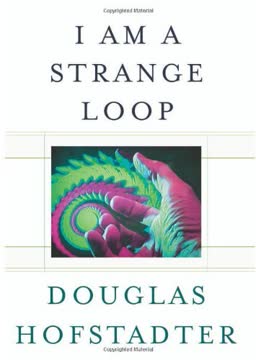


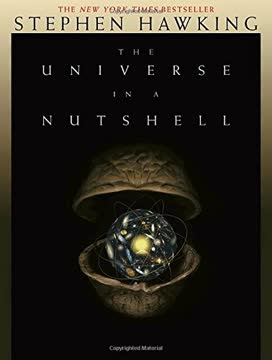

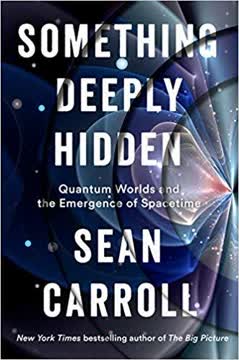
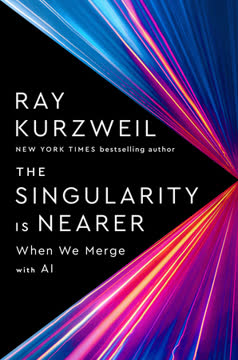



Download PDF
Download EPUB
.epub digital book format is ideal for reading ebooks on phones, tablets, and e-readers.

